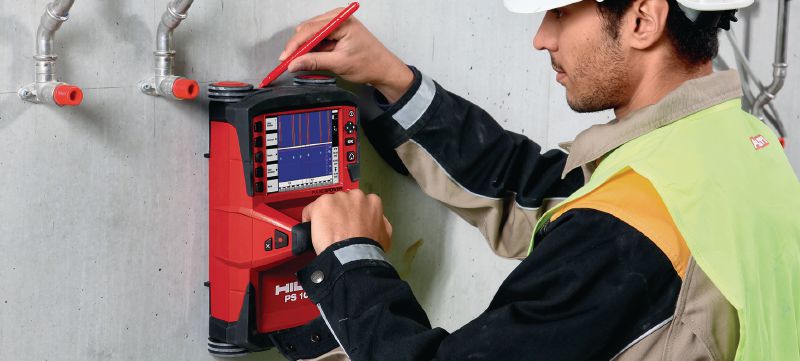Discovering the Depths: A Comprehensive Overview to Concrete Scanning and Its Diverse Applications
In the world of building and facilities growth, the precise process of concrete scanning holds a crucial duty in ensuring the architectural stability and security of jobs. As innovation continues to progress, the applications of concrete scanning have actually expanded far beyond mere surface-level analyses.
Importance of Concrete Scanning
Comprehending the relevance of concrete scanning is important in making certain the safety and stability of frameworks during building and construction and improvement projects. Concrete scanning utilizes advanced innovations such as ground-penetrating radar (GPR) and electro-magnetic induction to spot ingrained objects, voids, or various other abnormalities within concrete frameworks - RainierGPR Concrete Scanning. By conducting thorough scans prior to boring, cutting, or coring into concrete, building teams can prevent unintended damages to vital architectural elements like rebar, conduits, or post-tension cables. This aggressive strategy not only avoids costly fixings and task hold-ups however also improves general construction security by mitigating the danger of architectural failings or collapses because of compromised honesty.
In addition, concrete scanning plays an essential function in ensuring conformity with building regulations and policies that mandate the security of existing architectural components throughout building activities. By properly drawing up the internal composition of concrete, scanning innovations allow building professionals to make informed choices that promote the structural security and durability of buildings and infrastructure jobs. Essentially, the significance of concrete scanning hinges on its capability to secure both the structural integrity and the workers associated with construction undertakings.
Technologies Utilized in Concrete Scanning
Concrete scanning counts on advanced innovations such as ground-penetrating radar (GPR) and electromagnetic induction to properly identify ingrained objects and anomalies within concrete structures. Ground-penetrating radar runs by giving off high-frequency electromagnetic waves into the concrete. When these waves come across different materials or gaps within the concrete, they recuperate to the surface area, enabling the GPR system to develop an in-depth subsurface picture. This innovation is particularly effective in situating rebar, post-tension cable televisions, avenues, and various other objects installed in concrete.
Electro-magnetic induction, on the various other hand, works by creating electromagnetic fields around a concrete structure through a transmitter coil. When steel items are present within the concrete, they disrupt these magnetic fields, triggering eddy currents to move with the steel. By determining the adjustments in the electro-magnetic fields with a receiver coil, the system can identify the place of metallic items in the concrete.
These sophisticated modern technologies play a critical duty in non-destructive screening, ensuring the security and stability of concrete structures in numerous markets.
Applications in Building Market
Within the building and construction industry, concrete scanning technology check this discovers diverse applications that enhance project performance and security. Additionally, concrete scanning is used for situating spaces, such as air pockets or locations of degeneration within concrete, which can jeopardize the overall stamina of a framework. Concrete scanning plays a critical role in top quality control by verifying the thickness of concrete covers over reinforcement, making certain conformity with style specifications and criteria.

Security Advantages of Concrete Scanning
In the world of building and construction security, the application of concrete scanning innovation presents a vital benefit in preemptively determining potential dangers and fortifying architectural integrity. By making use of innovative scanning approaches such as ground-penetrating radar (GPR) and electro-magnetic induction, building and construction groups can properly locate rebar, post-tension wires, conduits, and various other covert items within concrete frameworks. This proactive method dramatically minimizes the risk of accidental strikes throughout drilling, cutting, or coring tasks, thereby protecting against pricey problems, injuries, and job delays.
Additionally, concrete scanning boosts worker safety by providing real-time info concerning the architectural condition of concrete elements. By addressing possible safety problems without delay, concrete scanning adds to producing a secure working atmosphere and reducing the likelihood of architectural failures or accidents on building sites.
Future Patterns in Concrete Scanning
Emerging advancements in scanning modern technology are positioned to reinvent the area of concrete assessment and evaluation. One significant fad that is obtaining traction is the combination of man-made intelligence (AI) and machine learning algorithms into concrete scanning gadgets. By taking advantage of the power reference of AI, these systems can analyze vast quantities of information accumulated throughout scanning processes to give even more accurate and thorough insights into the problem of concrete structures. This can aid in discovering hidden defects, forecasting prospective structural failures, and also advising upkeep methods.
An additional substantial pattern is the advancement of more portable and easy to use scanning tools. Miniaturization of scanning tools permits less complicated accessibility to constrained areas and remote places, making evaluations much more comprehensive and efficient. Additionally, developments in wireless interaction modern technologies allow real-time data transfer and analysis, facilitating quicker decision-making procedures.
Additionally, there is a growing focus on sustainability in concrete scanning modern technologies - RainierGPR Concrete Scanning. Makers are progressively incorporating eco-friendly products and energy-efficient functions into their tools to decrease ecological effect. These future trends are readied to improve the effectiveness, precision, and sustainability of concrete scanning practices, forming the market's future landscape
Verdict
In final thought, concrete scanning plays a crucial role in the building sector by ensuring the security and performance of numerous projects. As innovation developments, the future of concrete scanning holds encouraging developments for improving building procedures.
